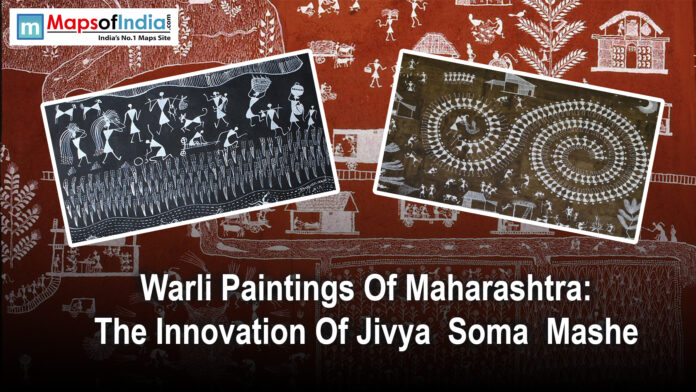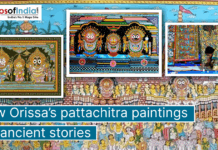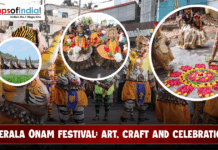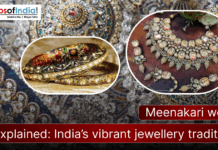Have you ever visited the small tribal villages in the Sahyadri mountain ranges of Maharashtra? If yes, you must have noticed the beautiful wall paintings adorning the mud walls of houses in these villages. These wall paintings are known as Warli paintings.
This folk art form is an integral part of the culture and traditions of the indigenous Warli tribes residing in the northern parts of Maharashtra. Continue reading further to learn about these unique paintings and the renowned artists who popularised Warli art worldwide.
Origins of Warli Paintings
Warli paintings originate from the Warli tribe, which has inhabited the forests of Maharashtra for ages. These tribes used simple materials like rice paste and charcoal to create line drawings on the walls of their houses depicting scenes from daily village life. Over generations, linear patterns, motifs, and symbols emerged, which the Warlis used to represent nature, rituals, folklore, and festivals. The drawings were made without any perspective or shading.
The Innovation of Jivya Soma Mashe
In the 1960s, an artist named Jivya Soma Mashe was fascinated by these folk paintings since childhood. Mashe was born in a small village called Palghar in 1934. From a very young age, he started learning the traditional Warli art techniques from the tribal elders. However, he realised that the complex compositions and methods of contemporary modern art could further enhance the potential of these folk paintings.
Mashe experimented with new colour palettes, compositions and techniques while retaining the core spiritual and cultural essence of Warli art. He created large-scale standalone Warli paintings on canvases employing brighter colours like red, yellow and blue.
The Power of Symbols in Warli Art
Mashe’s innovation propelled Warli’s art to new heights. He held many solo exhibitions across India and internationally. This brought global recognition to this ancient tribal folk art. Many prominent artists and art connoisseurs were awestruck by Mashe’s unique fusion of tradition and modernity.
His distinctive style of utilising geometric patterns and motifs built upon the framework of dots and lines to depict intricate narratives earned him the title of “Picasso of Warli art”. Sadly, Moshe passed away in 2018, but his legacy lives on through the numerous tribal artists he mentored in his village workshop.
Even today, Warli paintings vividly capture viewers’ imaginations with their simple yet powerful visual storytelling. Common themes include rituals, festivals, folklore, flora, and fauna. Did you know that each motif and symbol has a deeper symbolic meaning? For example, the sun represents cosmic energy, while peacocks depict royalty.
Other recurring motifs include triangles (representing men or women), circles (sun, moon, life cycle), squares (sacred spaces), and spirals and concentric circles (circle of life, harmony). Warli artists creatively weave these elements with precise line work to create harmonious compositions without guidelines. The linear minimalism is quite mesmerising!
A Window into Warli Culture
Warli’s paintings also hold significance beyond their artistic beauty. They offer insights into the Warli way of life and their deep respect for nature. Traditionally, Warli art was a way for communities to gather, preserve cultural knowledge, and mark significant events. Even the subjects depicted relate to rituals and celebrations.
Evolution and Legacy of Warli Art
It’s fascinating to see how Warli’s art has evolved while maintaining its roots. It has expanded from wall paintings to other mediums like cloth and sculptures, creating new livelihoods for tribal communities and inspiring contemporary artists in different fields. The traditions adapt to modern times without compromising their rich cultural legacy.
If you ever visit a Warli village, you should attend a folk art demonstration. You will be amazed by the skills of tribal children as young as 5-6 years who have mastered this painting style. Watching Warli’s art being brought to life is a memorable experience. You will understand why it is considered a pride of Maharashtra’s indigenous cultural heritage.
The Warli tribes continue propagating their traditions through these remarkable wall paintings. Jivya Mashe’s pioneering efforts ensured that Warli art received global recognition as an independent contemporary art form. His inspiring journey is testimony to the seamless evolution of folk traditions into modern artistic marvels when guided by passionate artists.




